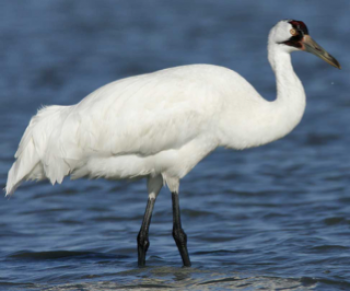Serendip is an independent site partnering with faculty at multiple colleges and universities around the world. Happy exploring!
Understanding and Predicting Changes in Population Size – Exponential and Logistic Population Growth Models vs. Complex Reality

In this analysis and discussion activity, students develop their understanding of the exponential and logistic population growth models by analyzing the recovery of endangered species and growth of bacterial populations. Students learn about the processes that cause exponential or logistic population growth, interpret data from several investigations, and apply their understanding to policy questions.
Next, students analyze examples where the trends in population size do not match the predictions of the exponential or logistic population growth models. They learn that models are based on simplifying assumptions and a model’s predictions are only accurate when the simplifying assumptions are true for the population studied.
In the last section, students analyze trends in human population size and some of the factors that affect the earth’s carrying capacity for humans.
One version of the Student Handout also includes mathematical equations for exponential and logistic population growth. Appendices to these Teacher Notes offer optional questions on food poisoning, exponential growth of a rabbit population, additional examples of exceptions to the logistic population growth model, and a research challenge (to develop proposals for sustainable use of two resources that may limit the earth’s carrying capacity for humans).
The first two attached files and a Google doc have the version of the Student Handout that includes mathematical equations for the exponential and logistic models of population growth. The third and fourth attached files and a Google doc have the version of the Student Handout without mathematical equations. The Google docs are designed for use in online instruction.
The fifth and sixth attached files have the Teacher Notes for this activity. The Teacher Notes provide background information and instructional suggestions and explain how this activity is aligned with the Next Generation Science Standards and the Common Core State Standards.
| Attachment | Size |
|---|---|
| PopGrowthMathSHO .docx | 2.28 MB |
| PopGrowthMathSHO .pdf | 558.19 KB |
| PopGrowthBioSHO.docx | 1.89 MB |
| PopGrowthBioSHO.pdf | 540.49 KB |
| PopGrowthTN.docx | 2.13 MB |
| PopGrowthTN.pdf | 1.41 MB |











Comments
2023 revision
I have updated, clarified and streamlined the Student Handout. I have also updated and clarified the Teacher Notes and added four appendices with optional sections for the Student Handout.
Ingrid
2018 revision
This learning activity has been entirely revised, although the same principles are covered. The first four sections of the revised Student Handout focus on understanding two phenomena: food poisoning and recovery of endangered species (e.g. whooping cranes). To understand these phenomena, students develop and investigate the exponential and logistic population growth models. Then, students investigate why these population growth models cannot account for many observed population trends, e.g. the decline in whooping crane populations that resulted in their endangered status. In a new final section, students apply what they have learned to a brief analysis of human population growth.
2017 revision
To engage student interest, the Student Handout begins with an analysis of characteristics of food poisoning that are related to population growth. To help students develop better understanding, I have revised and added questions and figures and reorganized the Student Handout. Revisions of the Teacher Notes include more explicit incorporation of NGSS Crosscutting Concepts.
Rabbits and genetic variability
re: "Rabbits can also show exponential population growth. A female cottontail rabbit begins reproducing by one year of age and typically has 3-4 litters of 4-5 baby rabbits each breeding season. A cottontail rabbit can live up to 8 years in captivity. If a population begins with a pair of breeding adults, and the rabbits have maximum reproduction and survival, how many rabbits do you think there would be after six years (just guessing, without calculating)?"
Why is it that the rabbits' offspring can interbreed with little or no mutation? Is there enough genetic variability so that the offspring from the first pair of rabbits are able to successfully produce healthy offspring?
Perils of Inbreeding
Thank you for your interesting comment which makes an important point. In fact, inbreeding rabbits in the way proposed would be expected to result in substantial problems. Breeding advice for rabbits often suggests various types of close inbreeding (e.g. parent/offspring, which is called "linebreeding"); however, this advice emphasizes the importance of culling any offspring which have inherited defects.
It is interesting that the huge population of rabbits in Australia is believed to be descendents of an initial group of 24 wild rabbits. This suggests that this small population had sufficient genetic variability to produce a very healthy population, although there may well have been additional introductions of rabbits since 1859. Also, of course, natural selection accomplished the recommended culling.
Your comment and these observations suggest another point that would be useful to include in the discussion of the last question in the section on Exponential Population Growth about unrealistic assumptions in the hypothesized rabbit population example.
2014 revisions
Some of the questions in the Student Handout have been revised and reorganized to improve clarity, and a question on density-dependent vs. density-independent effects on population growth has been added. The Teacher Notes have been substantially expanded to include more background information and explanation, as well as additional links to related learning activities for teaching ecology.
Post new comment